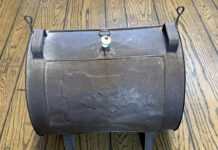In the last “About Grazing” column, Chris Penrose wrote about some early season grazing management. In this column, I want to continue that theme and examine the strategies of set stocking vs. rotation to begin the grazing season.
There is a saying that goes “Well begun is half done.” It implies that how a project begins is very important to the overall success of that project.
This is true when we think about the grazing season and how pastures are managed. If pasture paddocks are overgrazed in the first cycle, plant recovery and re-growth can be slowed in the next cycles.
I have seen this type of management error result in forage deficits throughout the rest of the grazing season unless some adjustment can be made to provide a longer rest period.
On the other hand, if that first cycle is managed correctly it becomes more likely that subsequent rotations will have adequate forage growth.
Several factors
As we look at the beginning of the 2009 pasture growth season, I believe there are several factors that should be kept in mind as livestock are turned on to this new growth.
First, how did those pastures enter the winter months? Here in Athens County, like many other parts of the state, rainfall was very limited from July through November 2008.
As a result, many pastures were overgrazed in the fall and plants entered the winter with low carbohydrate reserves. For some pastures, it may have been the second fall in a row that this occurred.
These plants have been stressed and will have lower vigor than plants that were not overgrazed and allowed to accumulate carbohydrate reserves.
Plants that were stressed going into the over winter period should not be overgrazed this spring. These pastures will have to be carefully managed to help plants recover.
Second, what is the current moisture condition? In Athens County, as I write this article, we are dry. We need some spring rains.
When moisture is short, care must be taken to not overgraze pastures because re-growth is likely to be slower, even with favorable temperatures.
Another factor that must be considered is how the first rotation will be managed. While the new growth must not be overgrazed, neither can the grazier wait until pasture growth has reached 6-8 inches before pastures are grazed.
Waiting too long puts the grazier behind the forage growth curve and forage quality and potential animal performance is lost.
Should a set stocking rate or a rotational management strategy be used to start the season? Which will best accomplish our goal?
Goal
The goal in the first few grazing passes is to just graze the top of plant growth and to keep moving. This will insure that leaf area is left and that re-growth will be vigorous.
Set stocking can be used and in this context means opening up the paddock divisions and letting livestock have access to all the paddocks.
I’m not advocating a continuous grazing scheme since the set stocking is allowed for only the first few weeks before moving back into a rotational scheme. The advantage is less labor and time is required to manage a set stocking system.
If the stocking rate on the farm is not excessive or at the carrying capacity of the farm then livestock will spread out and, in the short term should not overgraze the pastures, but rather top off the grass growth.
Disadvantages
The disadvantages are several. It is likely that pasture grazing will be uneven so when a rotation does begin this has to be dealt with through clipping, or adjusting stocking density.
Manure distribution will be uneven. Nutrients will get moved around, creating, or adding to, areas of high nutrient levels and areas of low levels within the pasture.
If the farm stocking rate is matched to the pasture capacity, then it is likely overgrazing of plants will take place at some level.
Benefit
The benefit of a rotational grazing system is it permits graziers to exercise management ability and to apply their knowledge in a way that benefits pasture plants and grazing livestock.
Graziers use pasture paddocks to control where, when and for how long livestock graze a given area. They use paddocks to manipulate stocking density to influence how evenly a paddock is grazed and how evenly manure is distributed.
Managing a rotational grazing system will permit the grazier to move quickly and evenly across the pasture acreage and protect plant health.
Key
Of course the key is the grazier has the time to manage the rotation and the ability to make better decisions than his or her livestock.
The 2009 pasture growth season begins. The strategy used to manage the beginning is worthy of some thought and consideration. Choose wisely.
Terms commonly used in grazing circles
Set stocking: A method of grazing management where a set or fixed number of livestock remain on a single paddock for an extended period of time.
Continuous grazing: A grazing management method that gives livestock unrestricted access to an entire grazing unit/acreage (pasture) throughout the grazing season.
Stocking rate: The total animal live weight that is carried or managed on the entire grazing acreage for the entire season.
Stocking density: The number of animal live weight that is present on a given unit (paddock) of the pasture acreage at any point in time.
Carrying capacity: A stocking rate (livestock number) that allows some target level of animal performance or economic return while maintaining and not degrading the pasture resource.












